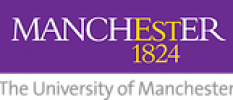© Pint of Science, 2025. All rights reserved.
Hear ye! First, we will traverse the boundaries of sound and sight, with a talk on converting images to soundwaves, and exhibitions where you visualise music and see 3D bacterial sculptures! Next, we will learn about 3D sound and acoustics design for VR (headset included!). If chemistry is more your thing, stick around for a fizzing finale set to the tune of the aptly-chosen “Blue Monday”.
The Light at the End of the Tunnel: Synchrotron Methods and Ancient Life
Professor Roy Wogelius
(Professor of Geochemistry)
For over a decade X-ray imaging and spectroscopy has been developed in a partnership between the UoM and Stanford University in order to resolve and study trace quantities of residual biochemistry in exceptionally preserved fossils. New capabilities have also been pioneered in collaborations with the Diamond Light Source and the Soleil Synchrotron. Here we will review some of the most recent results in this field. These advances have relevance not only to the study of fossils, but also create opportunities in studying most classes of natural solid material from meteorites to plant spores.
Creative uses of spatial audio technology in broadcasting
Dr Jon Francombe
(BBC Audio Team)
Eloise Whitmore
(Naked Productions)
In everyday life, we hear sounds from all around us. Unlike the eyes, which have a limited field of vision, the human auditory system always enables full 3D perception. So in order to create immersive and realistic audio experiences with reproduced sound, it’s important to attempt to recreate these 3D audio cues. Here, we’ll introduce some of the mechanisms of spatial audio perception and how these are used to create immersive audio experiences in broadcast content. We’ll discuss some cutting edge applications of 3D audio—including in virtual reality—from technical and creative viewpoints.
Map data © OpenStreetMap contributors.

